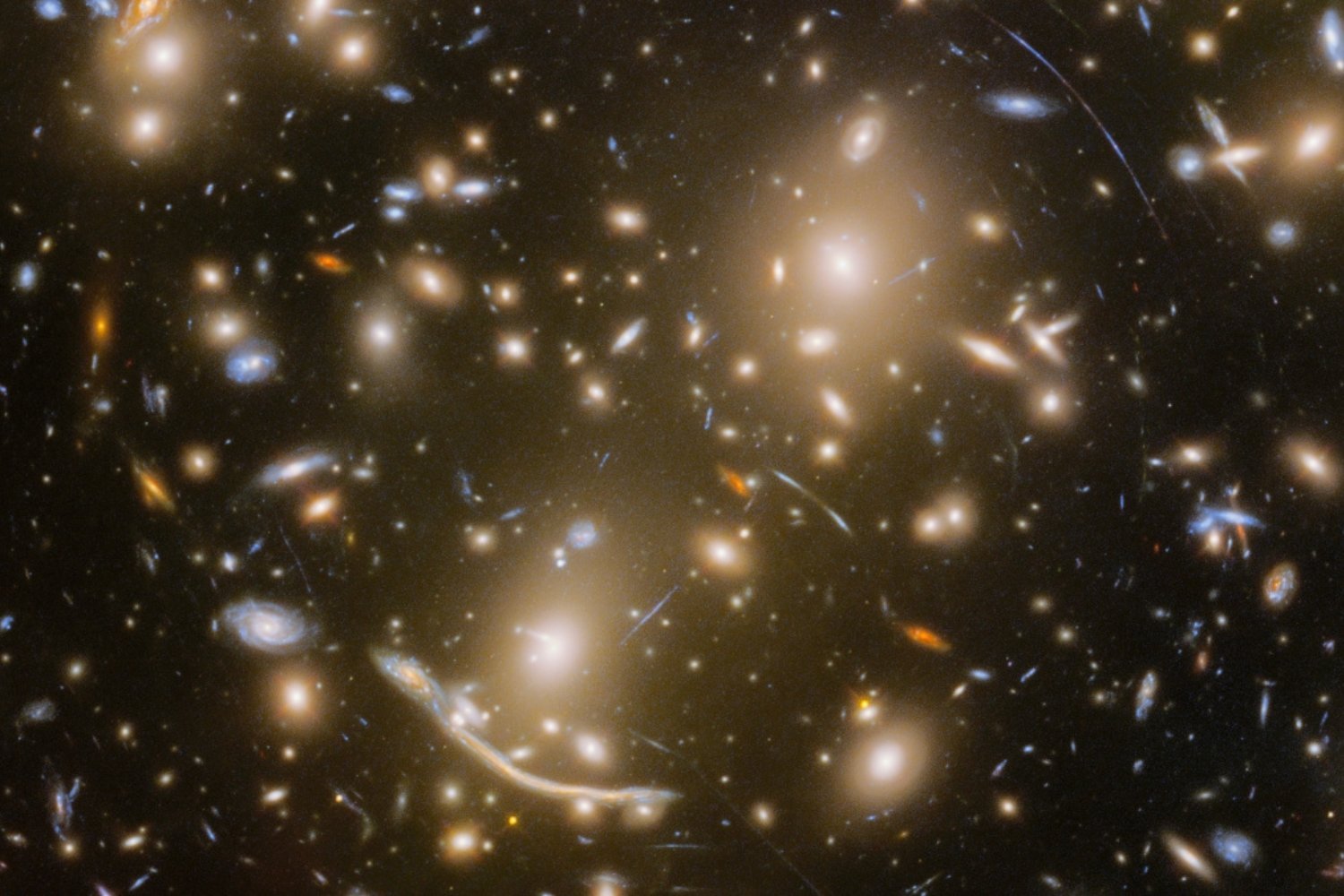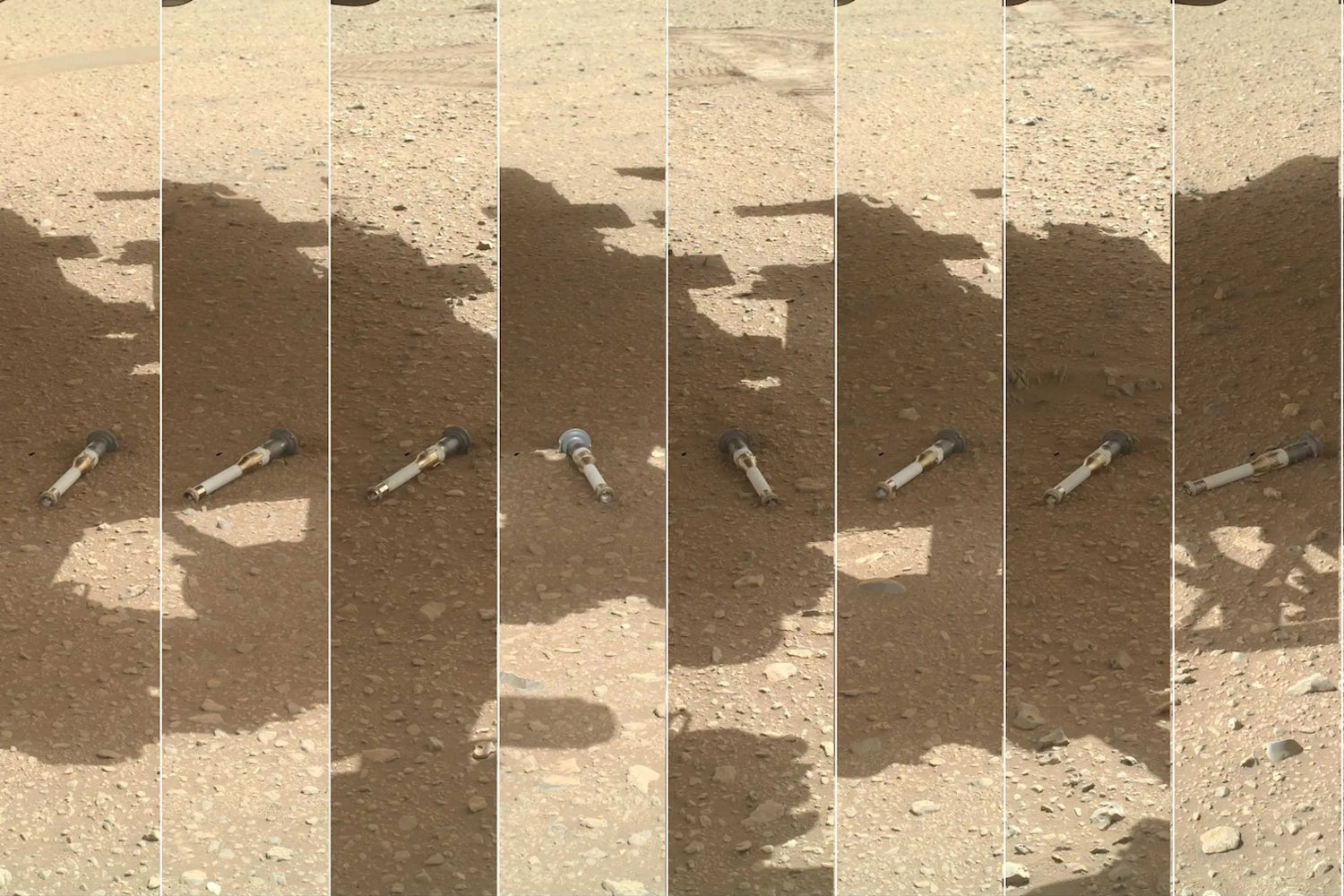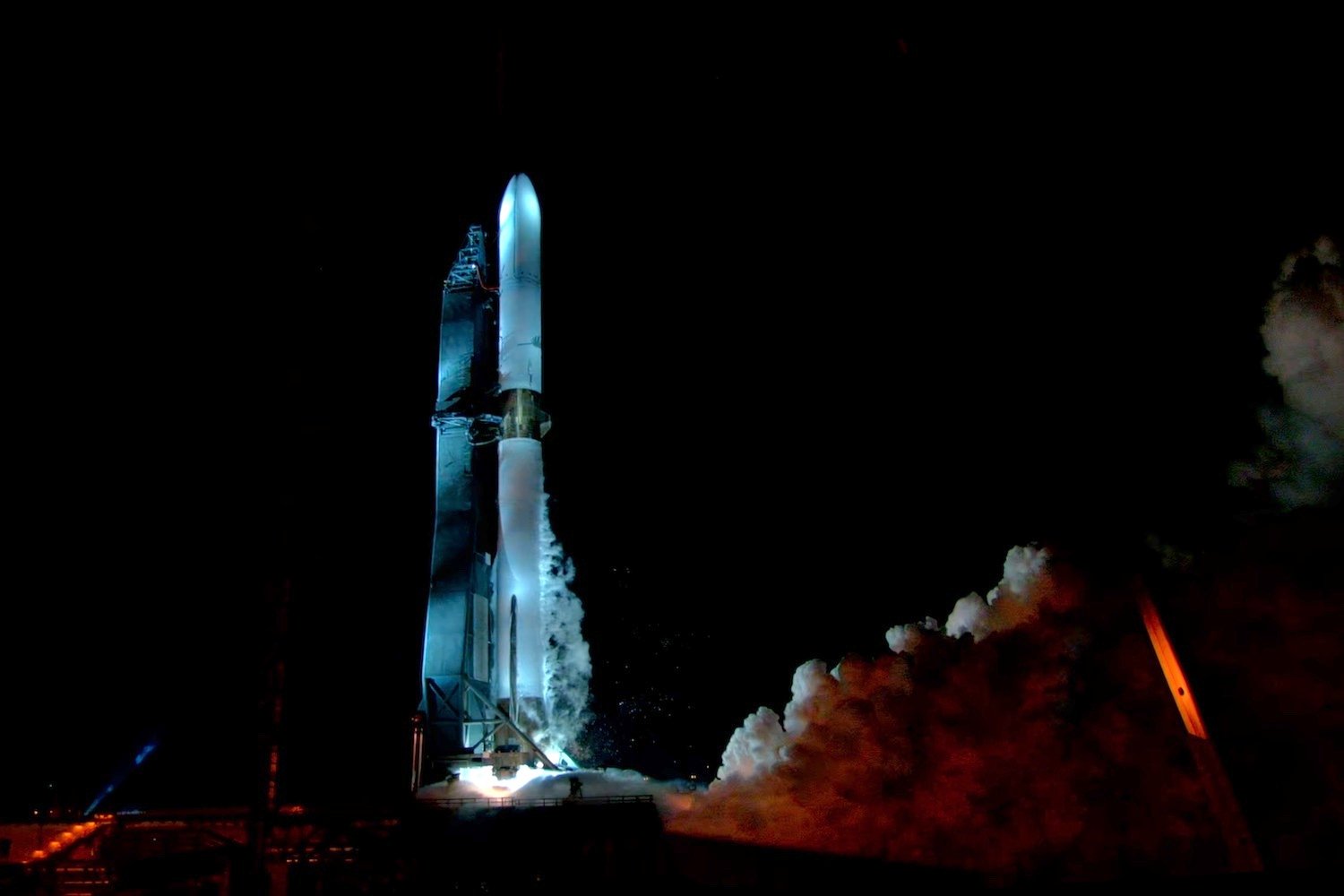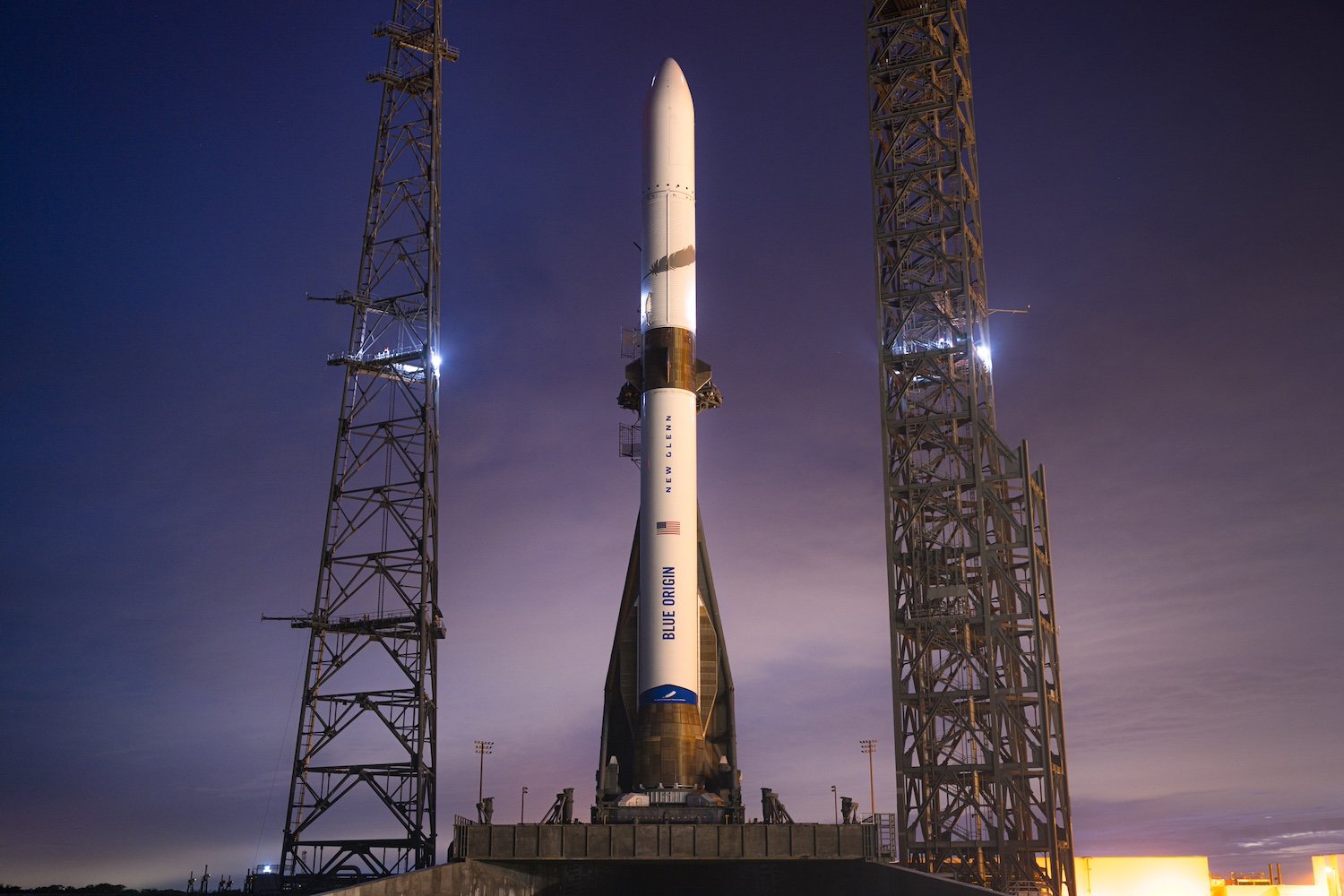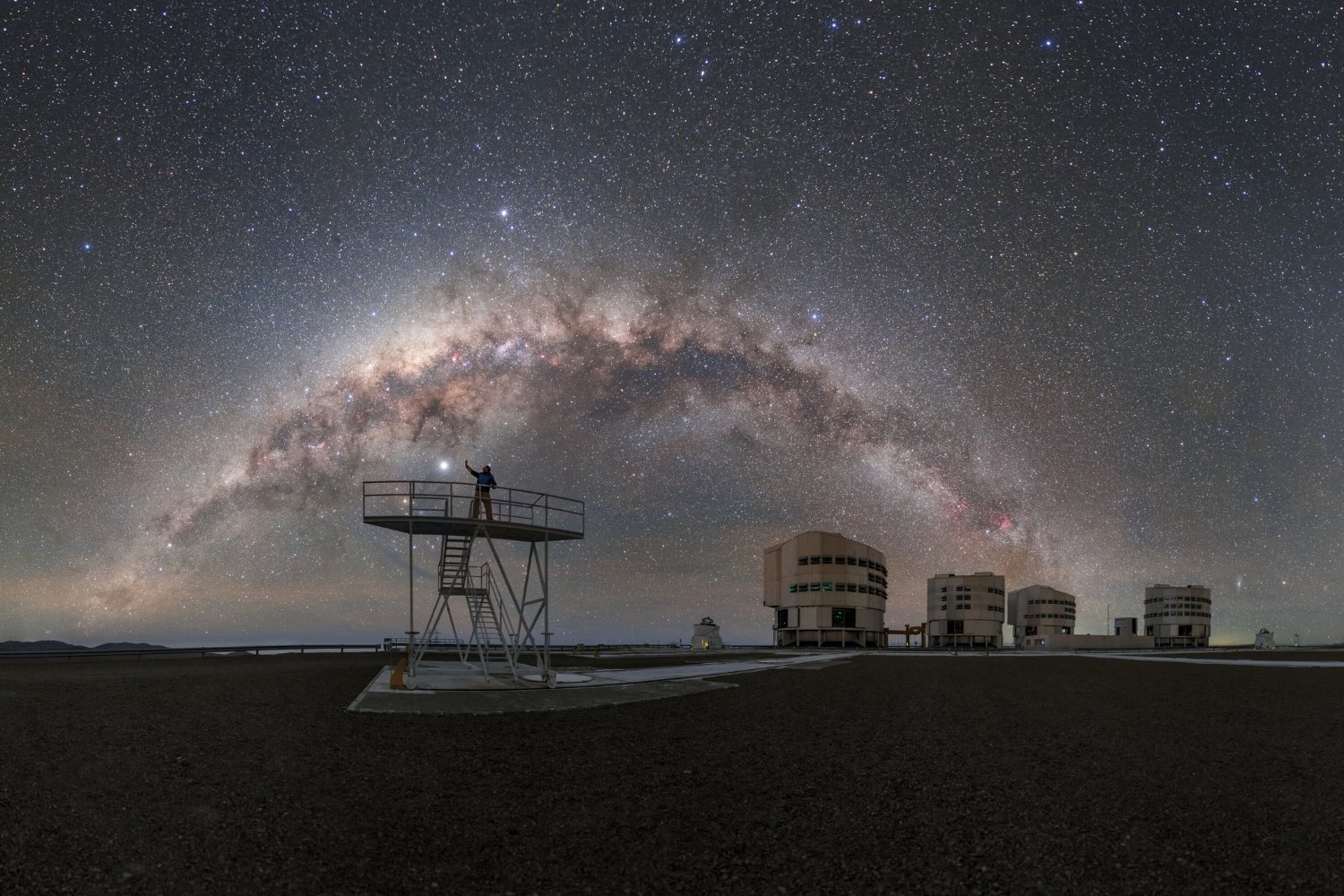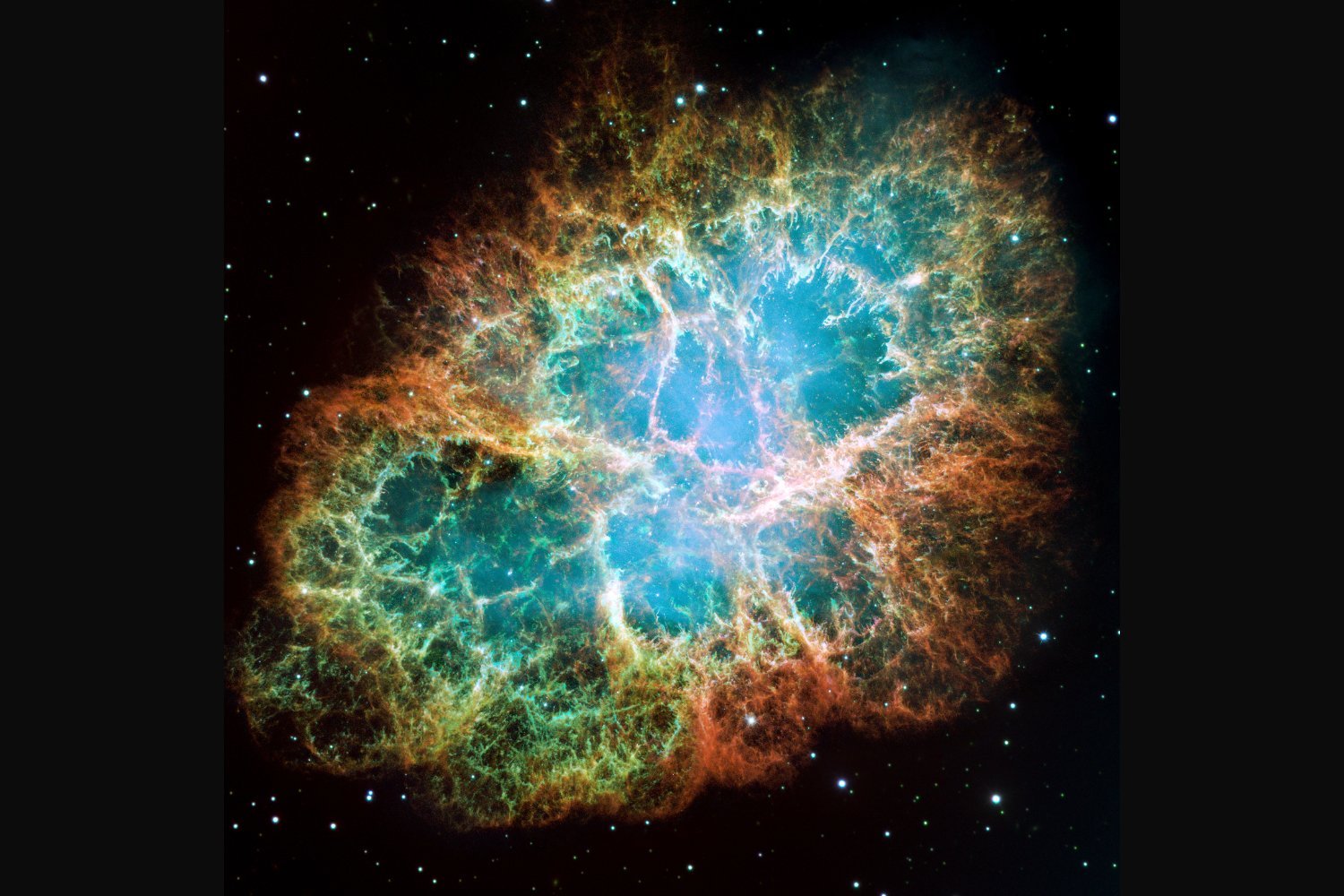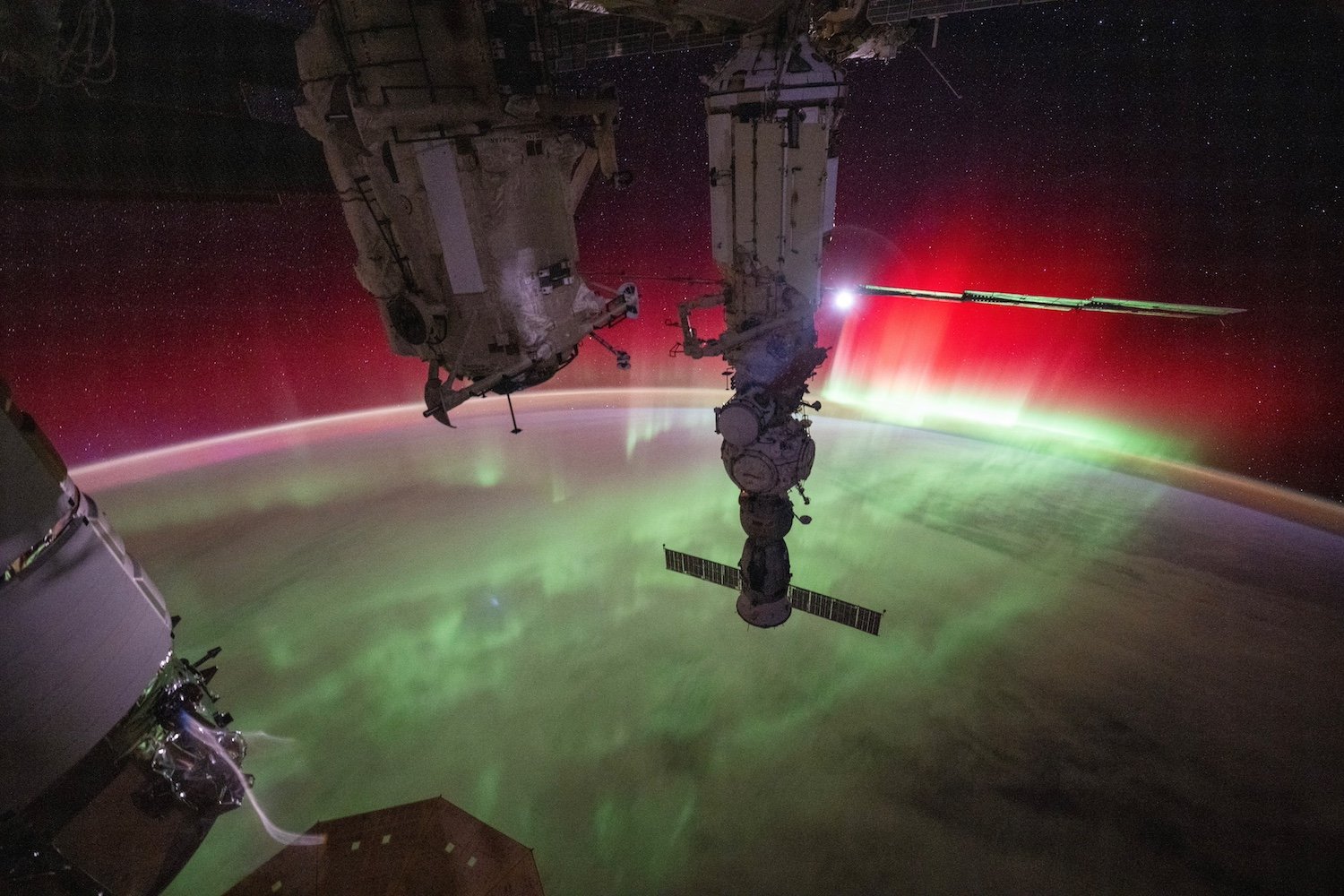The James Webb Space Telescope has achieved a groundbreaking feat, capturing images of 44 individual stars within the Dragon Arc, a gravitationally lensed galaxy an astounding 6.5 billion light-years from Earth. This unprecedented observation, made possible by Webb’s advanced capabilities and a cosmic alignment, opens new avenues for studying the distant universe.
The Dragon Arc appears as a curved streak of light due to gravitational lensing, a phenomenon where the gravity of intervening objects warps and magnifies light from more distant sources. This effect, similar to looking through a magnifying glass, allows astronomers to observe objects too faint to be seen otherwise.
A Lens Within a Lens: Unprecedented Magnification
A recent study published in Nature Astronomy details how astronomers leveraged a unique “lens within a lens” effect to achieve this remarkable observation. They focused on Abell 370, a galaxy cluster known for its strong gravitational lensing properties, which magnified the Dragon Arc’s light by approximately 100 times. Crucially, a star within Abell 370 acted as a secondary lens, further sharpening the image of the distant stars.
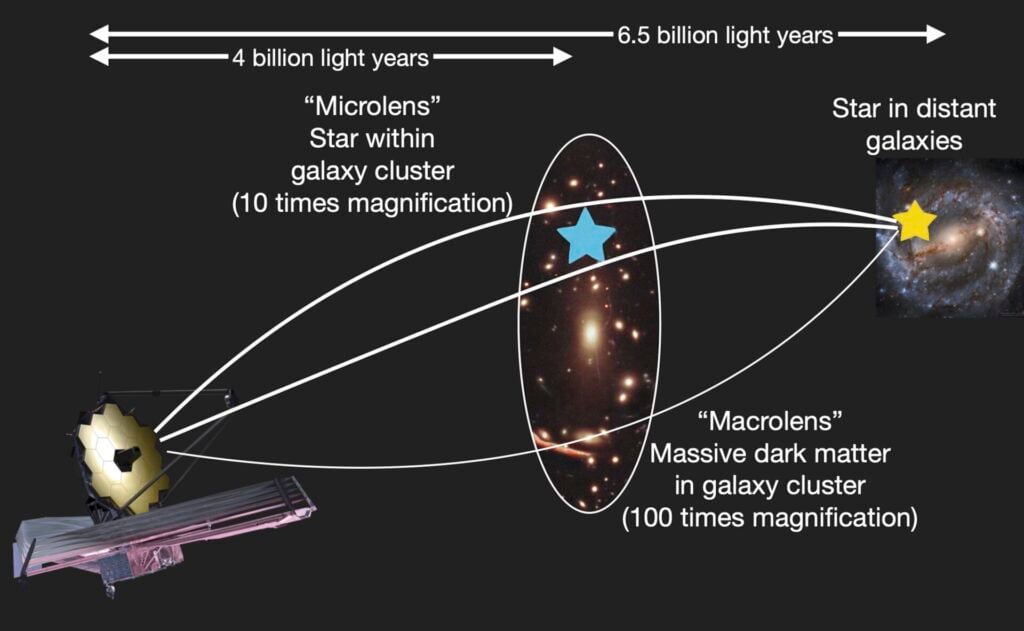 An illustration showing how Webb collects data on extremely distant stars.
An illustration showing how Webb collects data on extremely distant stars.
“Inside the galaxy cluster, numerous unbound stars drift freely,” explained Eiichi Egami, a research professor at Steward Observatory and co-author of the study. “When one of these stars passes in front of a background star in the Dragon Arc, it creates a microlensing effect in addition to the cluster’s overall lensing.” This combined magnification allowed the team to resolve individual stars within the distant galaxy.
Red Giants and Supergiants: Insights into Stellar Evolution
Analysis of the observed stars revealed that many are likely red giants or supergiants, magnified hundreds of times. These stars, nearing the end of their life cycle, expand and shed vast amounts of gas and dust. Webb’s ability to study these ancient stars offers valuable insights into stellar evolution in the early universe.
A New Era for Studying Distant Stars
“This discovery marks a paradigm shift, demonstrating the feasibility of studying large populations of individual stars in distant galaxies,” stated Fengwu Sun, a researcher at the Center for Astrophysics | Harvard & Smithsonian. Previously, observing individual stars at such distances was extremely challenging. In late 2024, astronomers captured the first detailed image of a red supergiant outside our galaxy, a significant achievement in itself. However, the ability to observe multiple stars simultaneously provides a statistically richer dataset, enabling deeper analysis.
This breakthrough builds on Webb’s previous observations of Earendel, the most distant known star, in 2022 and 2023. While Earendel’s discovery was remarkable, the Dragon Arc observation offers a broader perspective on stellar populations in the early universe.
Future Observations and Implications for Dark Matter
Future Webb observations of the Dragon Arc are planned, promising to reveal even more magnified stars within the lensed galaxy. These observations will not only deepen our understanding of gravitational lensing but also potentially shed light on the elusive nature of dark matter. By studying how light bends around massive objects, astronomers can gain insights into the distribution of dark matter within galaxy clusters.
This remarkable achievement by the Webb telescope opens exciting new possibilities for studying distant stars and galaxies, pushing the boundaries of our knowledge about the universe.



